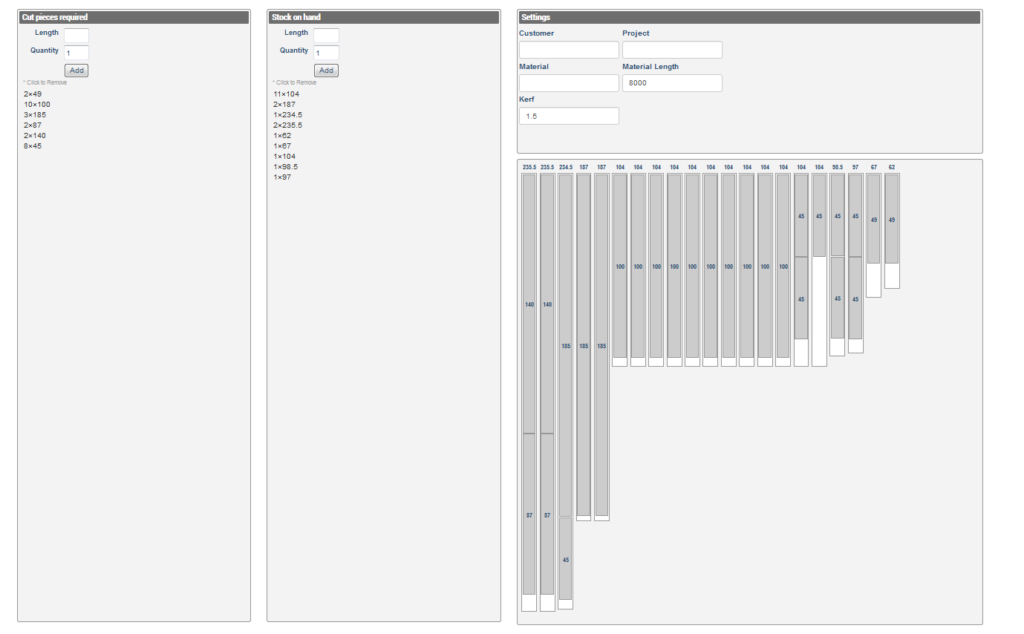It’s notable that within model building circles, using super glue with baking soda added on the glued spots creates a plastic like bond that’s once cured can be sanded or filed into a final shape…. Very durable
Video’s I found to demonstrate this:
It’s notable that within model building circles, using super glue with baking soda added on the glued spots creates a plastic like bond that’s once cured can be sanded or filed into a final shape…. Very durable
Video’s I found to demonstrate this:
https://www.cutlistpro.com/linear-cutting-list-optimiser-calculator-free.html
Cutlist free online cutlist optimizer is used to calculate the most economical way to cut your lengths of material and eliminate wastage. The linear calculator can be used for any lengths material whether it be non-ferrous metals, steel, timber (wood), rubber, plastics, etc.

https://www.popularmechanics.com/home/tools/reviews/a3602/4283497/

Goede uitleg:
Kopen:
https://www.gamma.nl/assortiment/cando-schroefverbinder-boorhulp-voor-timmerpanelen/p/B510559
Instructie voor bovenstaande set:
Ask HN: What do you do with your Raspberry Pi?
The pi runs a reddit bot that reads the votes, and can switch on a pump to water. It also collects data about sunlight, moisture, temp and humidity to help inform the decision about watering. Despite many people’s preconceptions about the goodness of the internet, I must admit that they do a wonderful job caring for my plant!
website: http://www.takecareofmyplant.com
subreddit w/ voting: http://old.reddit.com/r/takecareofmyplant (also has a lot of info if you want to do it yourself)
Similar project:
Raspberry pi is automatically uploading video of each watering to YouTube (https://www.youtube.com/channel/UCtl442fLi6KAOowkw_w83rA/vid…) and informing me with summary (incl. watering duration, soil moisture level, temperature, humidity, light level etc.).
I’m using a cheap submersible water pump controlled via relay by a python script running on raspberry pi. Water pump is connected to a clear vinyl tube for water distribution to the plant.
Availability of water level at source is checked by a non-contact liquid level sensor.
Triggers for watering plant are defined as follows: 1. There is water in tank / source (checked by non-contact liquid level sensor) 2. Soil moisture level is below certain threshold (measured by 2 soil moisture capacity sensors embedded in the plant) 3. Watering duration is determined by current soil moisture level; Python script activates relay to run the pump for the right duration. 4. Same python script also: – activates camera to record watering (+2s buffer to have all on the video) via usb cam connected to the pi (leveraging opencv lib) – uploads recorded video automatically to youtube channel (if pi has internet connection) – summarizes watering event and sends me notification with link to the recording and other helpful stats (temp, humidity, moisture level etc.) – saves all metrics to sqllite db for future reference
Key parts I ended up using for the project: 1. Water pump: https://www.amazon.com/gp/product/B01LWXV7DE/ref=ppx_yo_dt_b…
2. Non-contact Liquid Level Sensor -XKC-Y25-NPN: https://www.amazon.com/gp/product/B07D3246BH/ref=ppx_yo_dt_b…
3. Gikfun Capacitive Soil Moisture Sensor: https://www.amazon.com/gp/product/B07H3P1NRM/ref=ppx_yo_dt_b…
4. Relay: https://www.amazon.com/KeeYees-Channel-Indicator-Arduino-Ras… (though I just bought my when visiting Fry’s)
Adventures in deep learning, cheap hardware, and object recognition.
Source: How to build a robot that “sees” with $100 and TensorFlow – O’Reilly Media
EveryCircuit is an excellent online resource for EE students and circuit enthusiasts. Its interactive visual circuit simulation is great for understanding how circuits work and for quick prototyping of design ideas. And it has a huge online repository of educational and practical circuits designed by EveryCircuit community.
Source: EveryCircuit